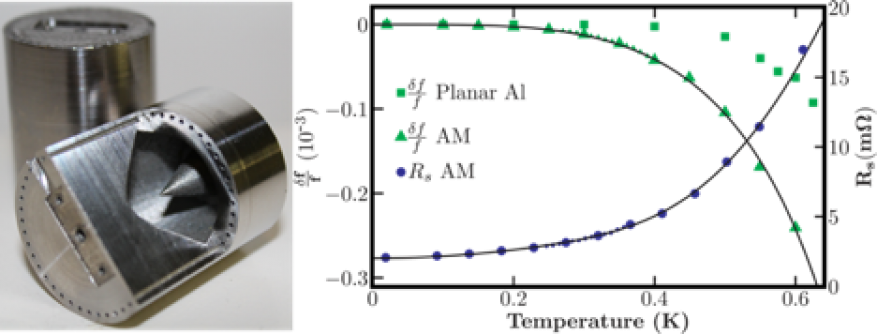Jonathan Dubois (16-SI-004)
Executive Summary
We are developing a robust capability to design, fabricate, and characterize quantum coherent devices for applications in sensing and analog quantum simulation. This capability addresses challenges in cyber physical resilience and the DOE goal to deliver major scientific tools through the development of a statistical model and exploration of analog quantum computation.
Project Description
Quantum coherent devices offer the potential for unprecedented precision in sensing and the ability to directly simulate quantum phenomena that have no known efficient classical algorithms. Such devices include quantum bits, or qubits (the fundamental units for quantum computing systems), microwave resonators (a type of superconducting photon detector), superconducting quantum interference devices (very sensitive magnetometers used to measure extremely subtle magnetic fields), single-electron transistors, and single-photon detectors. The performance of such devices is largely limited by resonant couplings to low-energy states in the constituent materials (i.e., materials-based sources of noise). Overcoming this limitation requires that subtle forms of noise from decoherence in these systems be understood and controlled. This project seeks to make a significant contribution to that understanding and control. We are building a robust capability to design, fabricate, and characterize quantum coherent devices for applications in sensing and analog quantum simulation by conducting experiments to probe the fundamental limits of noise in these systems and applying these capabilities to develop a next-generation superconducting qubit-based detector of hypothetical dark-matter elementary particles called axions. Dark matter is estimated to make up about 23 percent of the energy density of the universe, with the rest being a mysterious repulsive dark energy and ordinary matter.
We are building on significant investments in cryogenic facilities, experimental and theoretical expertise in low-temperature detectors, and quantification (developed at Lawrence Livermore National Laboratory) of margins and uncertainty tools. These statistical tools are applied to complex systems where comprehensive experimental test data are not readily available and cannot be easily generated. With this project, we will disentangle and overcome the different contributions of noise in a carefully designed set of quantum systems to reach levels of coherence required for novel applications such as ultrahigh-fidelity quantum sensors and quantum simulations. Expected results include new capabilities in design, fabrication, and characterization of quantum coherent devices, as well as a novel coherent detector that can be applied to the axion dark-matter search, and microwave multiplexers for cryogenic detector arrays. We will also deliver a statistical model that includes a comprehensive framework based on uncertainty quantification, and quantification of margins and uncertainty methodologies.
Mission Relevance
Our development of materials for new sensor and platform technologies and prototypes of new capabilities based on these new technologies will support the Laboratory's advanced materials and manufacturing development core competency. In addition, our efforts are relevant to the laboratory's research challenge in cybersecurity and cyber-physical resilience and the DOE goal to deliver major scientific tools through the development of a statistical model and exploration of analog quantum computation, particularly the quantification of potential computational advantages of analog quantum simulation over classical methods in deep learning.
FY17 Accomplishments and Results
In FY17 we generated multiple records of invention including a method for fabricating qubits with improved coherence time. Specific accomplishments included (1) establishing a low-noise test facility and demonstrating characterization of qubits; (2) developing a fabrication process for superconducting devices suitable for a quantum-emulation test bed; (3) developing multiple experimental platforms for characterization, control, and amelioration of materials-based sources of decoherence and noise; (4) developing a theoretical framework to guide design of a quantum-emulation test bed capable of universal emulation of complex many-body quantum dynamics; (5) developing methods for multiplexed control and quantum-limited readout of superconducting detector arrays; and (6) discovering a new class of superconducting materials with broad applications.
Publications and Presentations
Dubois, J. 2017. "High-Kinetic Inductance Additive Manufactured Superconducting Microwave Cavity." Applied Physics Letters 111. doi: 10.1063/1.5000241. LLNL-JRNL-733239.
Holland, E. T. 2017. "High Fidelity Executable Instruction Sets for Quantum Processor Units." LLNL-PROP-744817.
Qu, D. 2017. "Unconventional Superconductivity in a Focused Ion Beam Decorated Topological Insulator." LLNL-PROP-744861.






